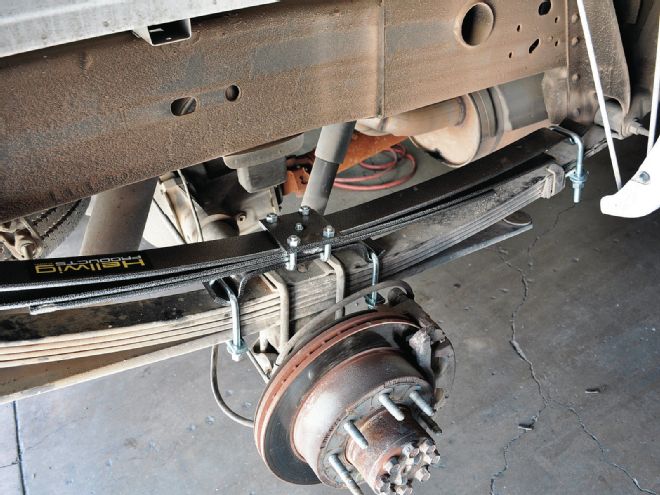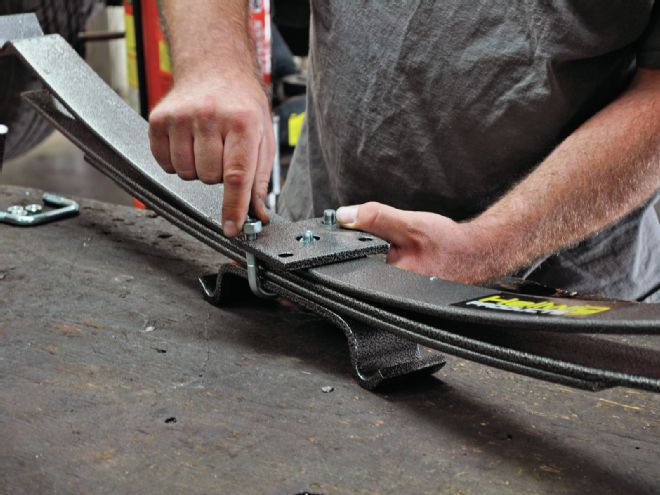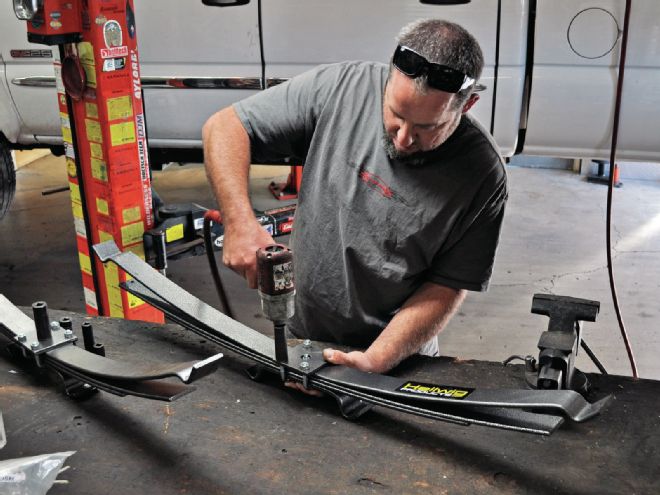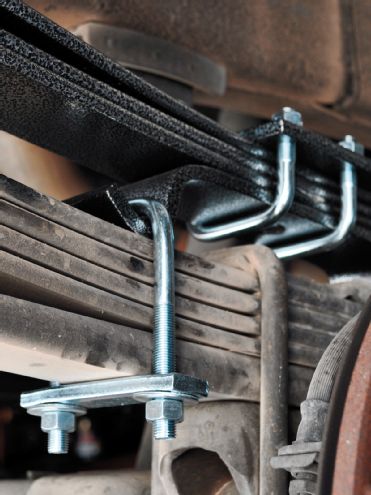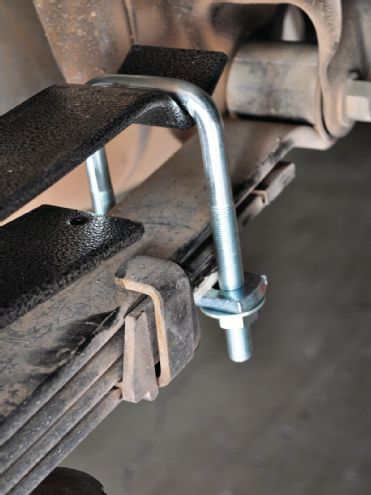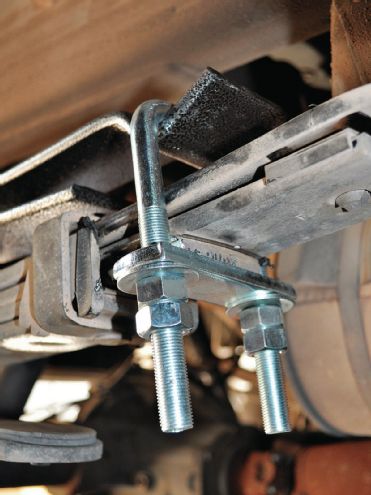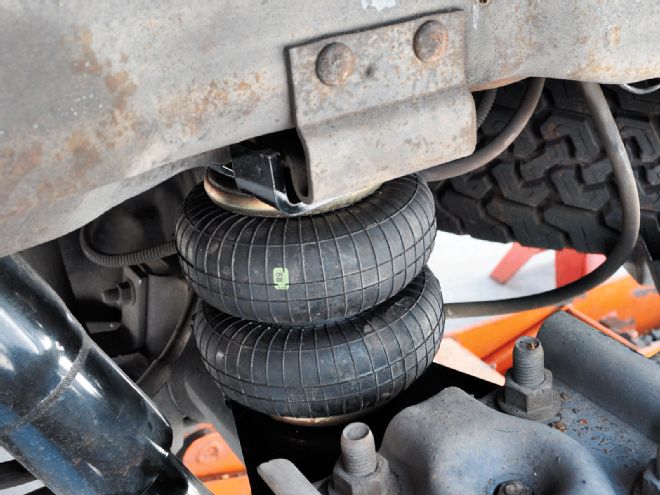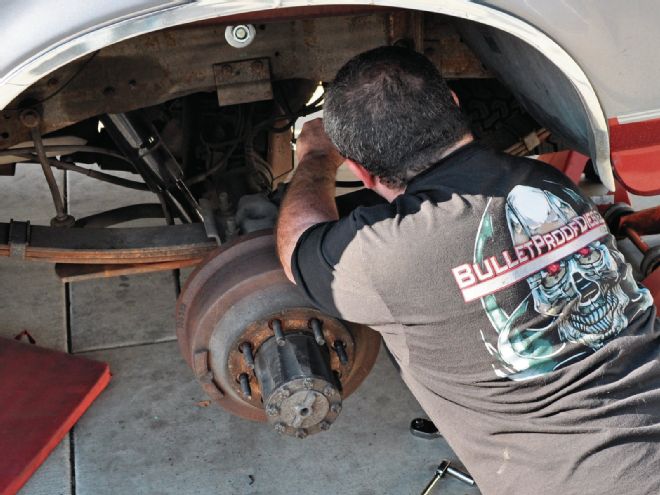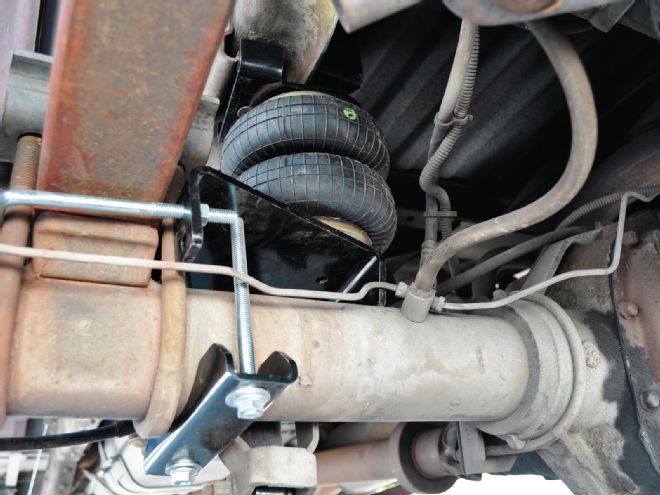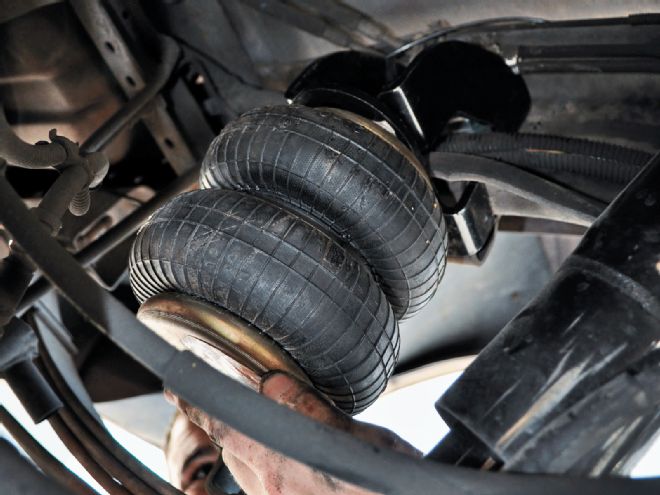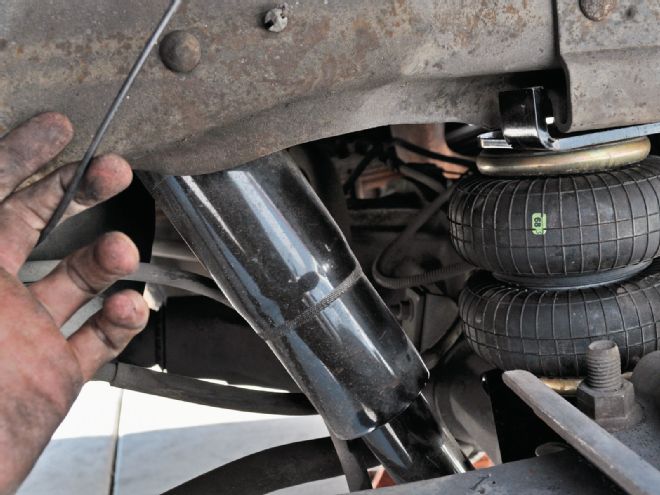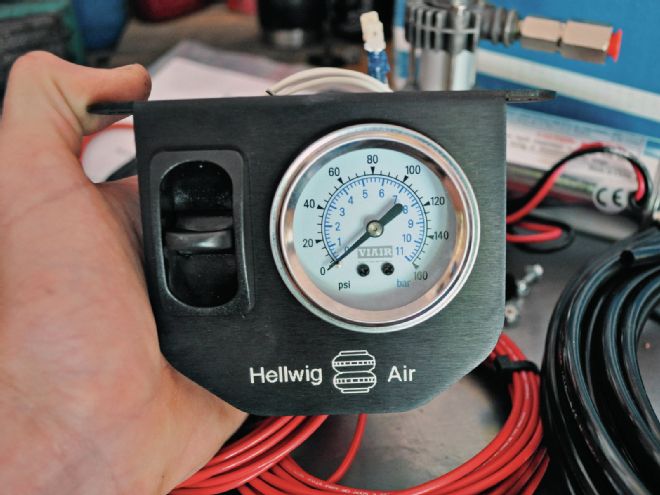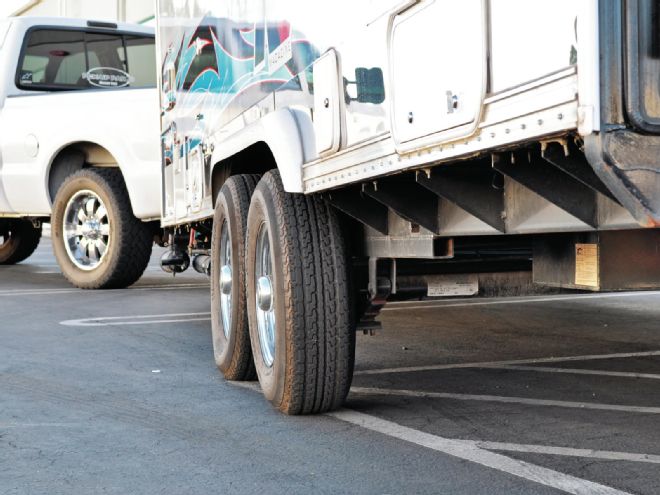
| An overloaded or un-leveled trailer will drastically increase tire wear, the suspension will go through more stress, and braking ability will be reduced substantially.
Overloaded vehicles are dangerous, period. While a rig may be rated from the factory to haul a specific load, that load can—and will—drastically change the driving characteristics of said vehicle. If the vehicle is loaded heavily in the rear with a trailer or cargo, this can cause misalignment of the front end due to the suspension being unloaded and at the top of its travel. Plus the angle of the vehicle to the road is now so drastically different from the road it was originally aligned to. An unloaded front end can cause excessive or inconsistent tire wear and will most definitely reduce steering response to dangerous levels.
Another problem has to do with braking. With a sagging tow rig and trailer combo under hard braking due to the un-level combo, the trailer will push the read end of the tow truck into the ground, thus unloading the front suspension, reducing steering control and braking ability substantially (front brakes generally handle 70 percent of the vehicle’s stopping power).
With a motorhome (or truck and camper), the problem can be the same but slightly different. Most motorhomes, Class A, B, or C, are loaded fairly evenly front to back from the factory. The springs fatigue as they age, causing in most cases an extremely soft/bouncy ride, excessive bottoming out, and much more body roll through the turns. The end result is less control of the vehicle, often to dangerous levels, and more stress behind the wheel.

| Overloaded trucks will see the same problems: decreased braking ability and increased wear on the suspension and tires.
There are multiple ways to remedy these overloaded issues: A good set of shocks will control the bounce but will not help with the overloaded and un-leveled issue. For that we need to look at airbags or overload/helper springs. Each will get the job done, but both have their pluses and minuses.
Overloads
Overload springs, also known as helper springs, are an additional set of springs attached to the existing leaf springs. They will only work on leaf-sprung suspensions. We’ve seen many different designs, but the most common and the ones we have had the best luck with so far come from Hellwig Products. Hellwig’s springs are available in many different strengths and are fairly adjustable from there. They clamp to the center of the existing spring, close to the axle, and the Hellwig spring kicks in to help carry the load as the U-shaped factory spring flattens out under a load. This design allows for a decently smooth ride while unloaded. We prefer this type of load control device for vehicles carrying a load the majority of the time on the road, like a motorhome or a 100 percent dedicated tow rig. You should consider airbags if you use your tow rig as a daily driver as helper springs, despite their progressive design, will give a slightly stiffer ride when unloaded.
Airbags
Airbags are great for their quick adjustability. Unloaded, the ’bags need only a small amount of pressure (10 psi average), making for a smooth from-the-factory ride. Once loaded, the ’bags can be filled to level the vehicle and will then still offer a smooth ride. Got a few different trailers? Is your tow rig your daily driver, as well? Or maybe you tow with your motorhome only about half the time. Airbags are a perfect fit. Sure, there’s a risk of air leaks or blowouts, but that risk has, for the most part, disappeared over the last decade or so. Airbag systems are now extremely reliable.
For our test, we utilized a kit from Hellwig, designed to level a vehicle within its rated capacity. It’s a full bolt-on kit—no holes to drill—with a quality, heavy-duty ’bag, vehicle-specific mounting brackets, plus all the hardware, air lines, and fittings needed to get the job done right.
 | An overloaded or un-leveled trailer will drastically increase tire wear, the suspension will go through more stress, and braking ability will be reduced substantially.
Overloaded vehicles are dangerous, period. While a rig may be rated from the factory to haul a specific load, that load can—and will—drastically change the driving characteristics of said vehicle. If the vehicle is loaded heavily in the rear with a trailer or cargo, this can cause misalignment of the front end due to the suspension being unloaded and at the top of its travel. Plus the angle of the vehicle to the road is now so drastically different from the road it was originally aligned to. An unloaded front end can cause excessive or inconsistent tire wear and will most definitely reduce steering response to dangerous levels.
Another problem has to do with braking. With a sagging tow rig and trailer combo under hard braking due to the un-level combo, the trailer will push the read end of the tow truck into the ground, thus unloading the front suspension, reducing steering control and braking ability substantially (front brakes generally handle 70 percent of the vehicle’s stopping power).
With a motorhome (or truck and camper), the problem can be the same but slightly different. Most motorhomes, Class A, B, or C, are loaded fairly evenly front to back from the factory. The springs fatigue as they age, causing in most cases an extremely soft/bouncy ride, excessive bottoming out, and much more body roll through the turns. The end result is less control of the vehicle, often to dangerous levels, and more stress behind the wheel.
| An overloaded or un-leveled trailer will drastically increase tire wear, the suspension will go through more stress, and braking ability will be reduced substantially.
Overloaded vehicles are dangerous, period. While a rig may be rated from the factory to haul a specific load, that load can—and will—drastically change the driving characteristics of said vehicle. If the vehicle is loaded heavily in the rear with a trailer or cargo, this can cause misalignment of the front end due to the suspension being unloaded and at the top of its travel. Plus the angle of the vehicle to the road is now so drastically different from the road it was originally aligned to. An unloaded front end can cause excessive or inconsistent tire wear and will most definitely reduce steering response to dangerous levels.
Another problem has to do with braking. With a sagging tow rig and trailer combo under hard braking due to the un-level combo, the trailer will push the read end of the tow truck into the ground, thus unloading the front suspension, reducing steering control and braking ability substantially (front brakes generally handle 70 percent of the vehicle’s stopping power).
With a motorhome (or truck and camper), the problem can be the same but slightly different. Most motorhomes, Class A, B, or C, are loaded fairly evenly front to back from the factory. The springs fatigue as they age, causing in most cases an extremely soft/bouncy ride, excessive bottoming out, and much more body roll through the turns. The end result is less control of the vehicle, often to dangerous levels, and more stress behind the wheel.
